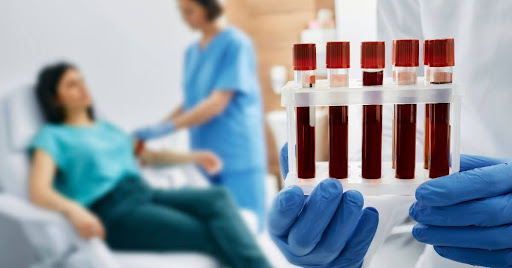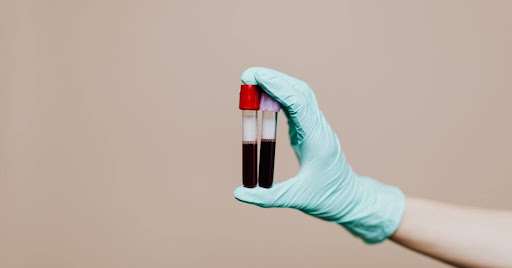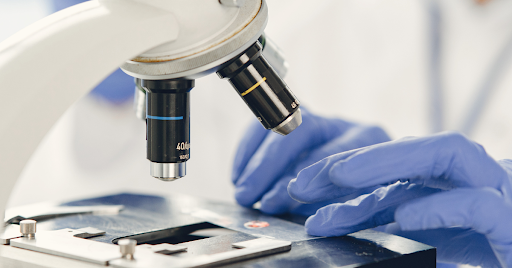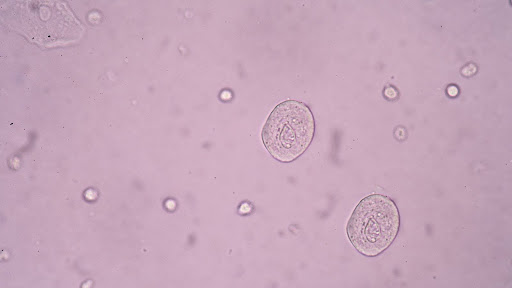What is a Hemogram Test? Understanding Its Role in Health Diagnosis
2 min read
By DocGenie , Published on - 25 February 2025 A hemogram test is a comprehensive blood test that provides essential insights into overall health. It is commonly used to diagnose infections, anemia, blood disorders, and other medical conditions. Understanding this test, its components, and its significance can help in early disease detection and effective treatment.
A hemogram test is a comprehensive blood test that provides essential insights into overall health. It is commonly used to diagnose infections, anemia, blood disorders, and other medical conditions. Understanding this test, its components, and its significance can help in early disease detection and effective treatment.What is a Hemogram Test?
 A hemogram test is a detailed blood examination that evaluates different components of blood, including red blood cells (RBCs), white blood cells (WBCs), hemoglobin levels, hematocrit, and platelets. This test is often recommended during routine health check-ups or when a doctor suspects an underlying medical condition.
A hemogram test is a detailed blood examination that evaluates different components of blood, including red blood cells (RBCs), white blood cells (WBCs), hemoglobin levels, hematocrit, and platelets. This test is often recommended during routine health check-ups or when a doctor suspects an underlying medical condition.
Complete Hemogram Test List
The hemogram test consists of multiple parameters that assess various aspects of blood health. The key components include:- Red Blood Cell (RBC) Count – Determines the number of RBCs, which carry oxygen.
- Hemoglobin (Hb) Levels – Measures the oxygen-carrying capacity of blood.
- Hematocrit (Hct) – Evaluates the proportion of red blood cells in the blood.
- White Blood Cell (WBC) Count – Helps in detecting infections and immune system disorders.
- Platelet Count – Assesses blood clotting ability.
- Mean Corpuscular Volume (MCV) – Indicates the average size of RBCs.
- Mean Corpuscular Hemoglobin (MCH) – Measures the average hemoglobin amount in RBCs.
- Mean Corpuscular Hemoglobin Concentration (MCHC) – Evaluates hemoglobin concentration in RBCs.
- Red Cell Distribution Width (RDW) – Analyzes variations in RBC size.
- Differential WBC Count – Breaks down WBC types such as neutrophils, lymphocytes, monocytes, eosinophils, and basophils.
Importance of Hemogram Blood Test Results
 Hemogram test results help doctors diagnose various conditions, including:
Hemogram test results help doctors diagnose various conditions, including:- Anemia – RBC count and hemoglobin indicate anemia, leading to fatigue and weakness.
- Infections and Inflammation – High WBC count may suggest infections or inflammatory diseases.
- Clotting Disorders – Abnormal platelet counts can lead to excessive bleeding or clot formation.
- Blood Cancers – Significant abnormalities in WBC count may indicate leukemia or lymphoma.
Hemogram Blood Test Normal Values
The normal values for a hemogram test vary based on age, sex, and health conditions. Here is a general reference range:| Parameter | Normal Range |
|---|---|
| Red Blood Cell (RBC) Count | 4.7–6.1 million/µL (Men) 4.2–5.4 million/µL (Women) |
| Hemoglobin (Hb) | 13.8–17.2 g/dL (Men) 12.1–15.1 g/dL (Women) |
| Hematocrit (Hct) | 40.7–50.3% (Men) 36.1–44.3% (Women) |
| White Blood Cell (WBC) Count | 4,500–11,000 cells/µL |
| Platelet Count | 150,000–450,000/µL |
Normal Range of Creatinine in Female
Though the hemogram test does not measure creatinine levels, it is often done alongside kidney function tests. The normal range of creatinine in females is 0.5-1.1 mg/dL.
What Does a Hemogram Test For?
A hemogram test is performed to:- Detect infections and inflammation
- Diagnose anemia and blood disorders
- Monitor chronic diseases such as leukemia
- Assess overall health and response to treatments



